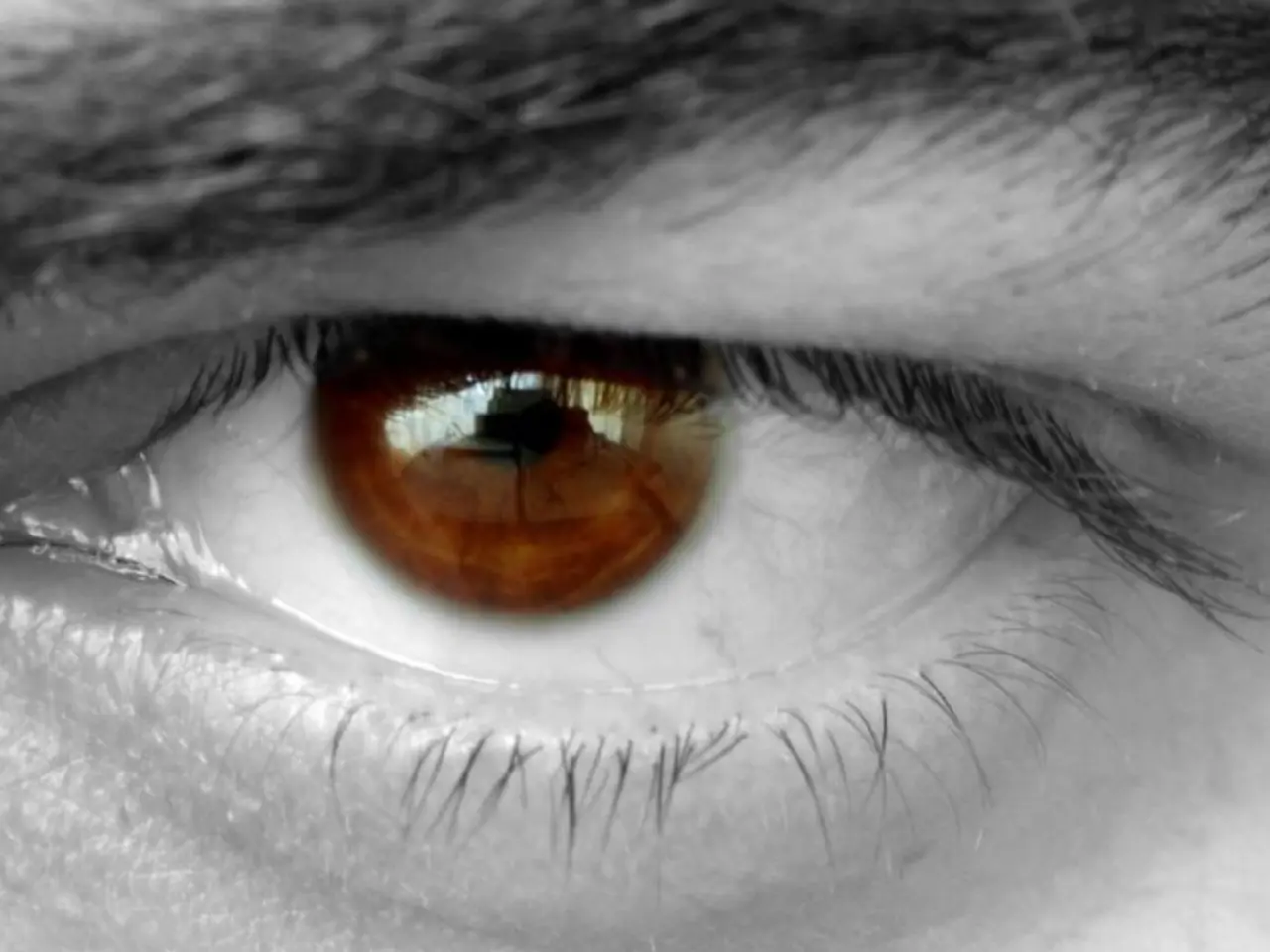Eye conditions connections: Exploring the relationship between blepharitis and dry eyes
Dry eye and blepharitis, conditions that affect the health of the eyes, can be persistent and require careful management. Here's a guide to understanding these conditions and the common treatments available.
Dry eye occurs when the eyes do not produce enough tears to stay lubricated. Symptoms include a feeling of something in the eye, stinging or burning sensation, red eyes, sensitivity to light, and blurry vision. In some cases, dry eye can be a symptom of blepharitis.
Blepharitis is a condition that causes inflammation of the eyelid. It can be divided into two types: Anterior blepharitis, which affects the outside front edge of the eyelid, and Posterior blepharitis, which affects the inner edge. Bacteria commonly found on the face and eyelids are the most common cause of Anterior blepharitis, while other conditions like rosacea and dandruff can also trigger Posterior blepharitis. Symptoms include a feeling of something in the eye, burning or stinging, watery eyes, itchy eyes, sensitivity to light, red, swollen eyes or eyelids, tears that are foamy or have bubbles, dry eyes, crusty eyelids or lashes in the morning.
Common treatments for blepharitis focus on symptom relief and managing underlying causes. These include eyelid hygiene, artificial tears, medications, targeted treatments for Demodex blepharitis, and in-office procedures like BlephEx. For eyelid hygiene, regular warm compresses applied twice daily to loosen crusts, followed by gentle eyelid scrubbing with a cotton swab and diluted baby shampoo or specialized lid cleansers, can help remove debris and bacteria. Artificial tears are used several times daily to relieve dryness and flush irritants. In more severe or persistent cases, antibiotic or steroid eye drops and ointments may be prescribed to reduce inflammation and infection.
For dry eye, treatments include frequent use of artificial tears and lubricating eye drops to maintain the tear film and relieve symptoms, warm compresses and eyelid hygiene to support meibomian gland function and improve tear quality, and intense pulsed light (IPL) therapy, a newer treatment especially effective when dry eye is associated with meibomian gland dysfunction and blepharitis.
In summary, key components of treatment are lid hygiene, artificial tears, anti-inflammatory or antibiotic therapy, mite management, and advanced in-office treatments like BlephEx and IPL, depending on severity and underlying causes. A humidifier can help alleviate dry eye symptoms at home, and tear duct plugs are an option for people whose tears drain too quickly from the eyes.
It is essential to contact a doctor if one experiences dry eye or blepharitis symptoms, as they can worsen over time and lead to more serious concerns such as blurry vision, eyelashes falling out, eyelashes growing in the wrong direction, problems with the cornea. Together, these approaches address the inflammation, bacterial load, mite infestation, gland dysfunction, and dryness that characterize blepharitis and dry eye, often requiring ongoing maintenance for long-term management. Steroid eye drops are used cautiously under medical supervision due to potential side effects such as increased eye pressure.
- Dry eye, a condition that affects eye health and leads to symptoms like a feeling of something in the eye, stinging or burning sensation, red eyes, sensitivity to light, and blurry vision, can be a symptom of certain medical-conditions like blepharitis.
- Science has provided several treatments for dried eyes, which include the frequent use of artificial tears, lubricating eye drops, warm compresses, eyelid hygiene, intense pulsed light (IPL) therapy, and in some cases, tear duct plugs.
- Blepharitis, a condition that causes inflammation of the eyelid and can be divided into two types, is often caused by bacteria found on the face and eyelids, but conditions like rosacea and dandruff can also trigger it.
- Mental-health, nutrition, fitness-and-exercise, and health-and-wellness are essential components for overall eye-health, and maintaining good eye health can help alleviate symptoms of conditions like blepharitis and dry eye.
- Key components of treatment for blepharitis are lid hygiene, antibiotic or steroid eye drops and ointments, mite management, and advanced in-office treatments like BlephEx and IPL, depending on the severity and underlying causes of the disease.
- People experiencing symptoms of dry eye or blepharitis, such as blurry vision, eyelashes falling out, or eyelashes growing in the wrong direction, should consult a doctor, as the conditions can worsen over time and lead to more serious concerns if left untreated.




